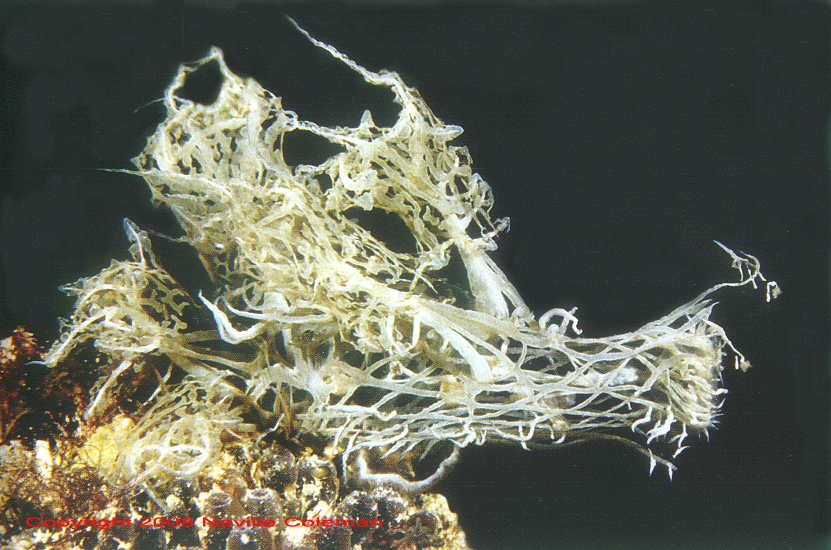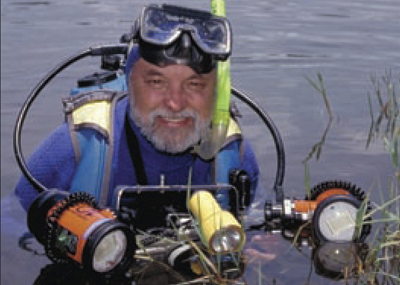 |
Melibe sp.
Photo courtesy of Neville Coleman
Melibe sp. (undescribed)
This weeks BOW will surely freak you out, I know it sure did me. This is just a little surprise of one of the many strange undescribed species Neville Coleman has been hiding under his Ozzie hat. It can be found on page 389 of his newly released – Nudibranchs – Encyclopedia – Catalogue of Asia/Indo-Pacific Sea Slugs.
Neville says this species is a Melibe , but you could have fooled me. The only way he knew it was even a living creature is because it was crawling along the reef. I would love to see a video of this critter swallowing prey. That would be freaky.
To orient you – the foot, cerata, rhinophores and oral hood are vaguely outlined with white lines. The oral veil is to the right. The common cirri along the edge of the hood are branched in this species. The rhinophores are slanted back over the body. You can just barely make out the typical Melibe crown shaped clavus, with long dangling projections. The cerata are to the left. These are highly branched. A white line on the edge of the foot mysteriously cut through the water, beneath the animal.
Amazing. Scary amazing.
Gig Harbor, Washington
March 2008
WEBMASTER'S NOTES : Dave indicates the the book will be available through Sea Challengers sometime in mid April. The book is hard cover with 416 pages , 3000 color photos and 300 new species. Book is expected to retail at $90 in the States.
 | Neville Coleman was born near the shores of the Lane Cove River in Sydney. As he grew up, fishing became his all-consuming passion: at ten years of age his most ardent aspirations were to become an explorer. On leaving school he completed an apprenticeship in Photo-lithography, but in 1963 his life reached a major turning point when, drawn by a love of nature and an unquenchable thirst for knowledge he set about to beat his greatest fear - of the ocean and it's inhabitants - and began spending his spare time diving in Sydney Harbour. |
Logging over 12,000 dives - and discovering over 450 species new to science, Nevilles photographs are on display at most major museums and aquariums in Australia. The Australasian Marine Photographic Index of which he is curator, is the largest scientifically-curated visual identification system in the Southern hemisphere with over 11,500 species photographed and cataloged.
